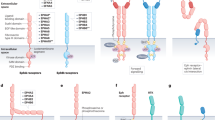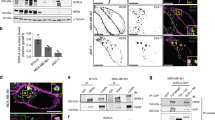Abstract
ATP-gated P2X7 receptors (P2X7R) are unusual plasma membrane ion channels that have been extensively studied in immune cells. More recently, P2X7R have been described as potential cancer cell biomarkers. However, mechanistic links between P2X7R and cancer cell processes are unknown. Here, we show, in the highly aggressive human breast cancer cell line MDA-MB-435s, that P2X7 receptor is highly expressed and fully functional. Its activation is responsible for the extension of neurite-like cellular prolongations, of the increase in cell migration by 35% and in cell invasion through extracellular matrix by 150%. The change in cancer cell morphology and the increased migration appeared to be due to the activation of Ca2+-activated SK3 potassium channels. The enhanced invasion through the extracellular matrix was related to the increase of mature forms of cysteine cathepsins in the extracellular medium, which was independent of SK3 channel activity and not associated with cell death. Pharmacological targeting of P2X7R in vivo was crucial for cell invasiveness in a zebrafish model of metastases. Our results demonstrate a novel mechanistic link between P2X7R functionality in cancer cells and invasiveness, a key parameter in tumour growth and in the development of metastases. They also suggest a potential therapeutic role for the newly developed P2X7R antagonists.
This is a preview of subscription content, access via your institution
Access options
Subscribe to this journal
Receive 50 print issues and online access
$259.00 per year
only $5.18 per issue
Buy this article
- Purchase on Springer Link
- Instant access to full article PDF
Prices may be subject to local taxes which are calculated during checkout







Similar content being viewed by others
References
Adinolfi E, Callegari MG, Ferrari D, Bolognesi C, Minelli M, Wieckowski MR et al. (2005). Basal activation of the P2X7 ATP receptor elevates mitochondrial calcium and potential, increases cellular ATP levels, and promotes serum-independent growth. Mol Biol Cell 16: 3260–3272.
Adinolfi E, Cirillo M, Woltersdorf R, Falzoni S, Chiozzi P, Pellegatti P et al. (2010). Trophic activity of a naturally occurring truncated isoform of the P2X7 receptor. Faseb J 24: 3393–3404.
Adinolfi E, Melchiorri L, Falzoni S, Chiozzi P, Morelli A, Tieghi A et al. (2002). P2X7 receptor expression in evolutive and indolent forms of chronic B lymphocytic leukemia. Blood 99: 706–708.
Burnstock G . (2006). Purinergic signalling. Br J Pharmacol 147: S172–S181.
Cabrini G, Falzoni S, Forchap SL, Pellegatti P, Balboni A, Agostini P et al. (2005). A His-155 to Tyr polymorphism confers gain-of-function to the human P2X7 receptor of human leukemic lymphocytes. J Immunol 175: 82–89.
Chantome A, Girault A, Potier M, Collin C, Vaudin P, Pages JC et al. (2009). KCa2.3 channel-dependent hyperpolarization increases melanoma cell motility. Exp Cell Res 315: 3620–3630.
Deli T, Varga N, Adam A, Kenessey I, Raso E, Puskas LG et al. (2007). Functional genomics of calcium channels in human melanoma cells. Int J Cancer 121: 55–65.
Di Virgilio F, Chiozzi P, Falzoni S, Ferrari D, Sanz JM, Venketaraman V et al. (1998). Cytolytic P2X purinoceptors. Cell Death Differ 5: 191–199.
Di Virgilio F, Ferrari D, Adinolfi E . (2009). P2X(7): a growth-promoting receptor-implications for cancer. Purinergic Signal 5: 251–256.
Donnelly-Roberts DL, Jarvis MF . (2007). Discovery of P2X7 receptor-selective antagonists offers new insights into P2X7 receptor function and indicates a role in chronic pain states. Br J Pharmacol 151: 571–579.
Egeblad M, Werb Z . (2002). New functions for the matrix metalloproteinases in cancer progression. Nat Rev Cancer 2: 161–174.
Frosch BA, Berquin I, Emmert-Buck MR, Moin K, Sloane BF . (1999). Molecular regulation, membrane association and secretion of tumor cathepsin B. Apmis 107: 28–37.
Gillet L, Roger S, Besson P, Lecaille F, Gore J, Bougnoux P et al. (2009). Voltage-gated sodium channel activity promotes cysteine cathepsin-dependent invasiveness and colony growth of human cancer cells. J Biol Chem 284: 8680–8691.
Gupta GP, Massague J . (2006). Cancer metastasis: building a framework. Cell 127: 679–695.
Hibell AD, Kidd EJ, Chessell IP, Humphrey PP, Michel AD . (2000). Apparent species differences in the kinetic properties of P2X(7) receptors. Br J Pharmacol 130: 167–173.
Jedeszko C, Sloane BF . (2004). Cysteine cathepsins in human cancer. Biol Chem 385: 1017–1027.
Li X, Zhou L, Feng YH, Abdul-Karim FW, Gorodeski GI . (2006). The P2X7 receptor: a novel biomarker of uterine epithelial cancers. Cancer Epidemiol Biomarkers Prev 15: 1906–1913.
Lopez-Castejon G, Theaker J, Pelegrin P, Clifton AD, Braddock M, Surprenant A . (2010). P2X(7) receptor-mediated release of cathepsins from macrophages is a cytokine-independent mechanism potentially involved in joint diseases. J Immunol 185: 2611–2619.
Marques IJ, Weiss FU, Vlecken DH, Nitsche C, Bakkers J, Lagendijk AK et al. (2009). Metastatic behaviour of primary human tumours in a zebrafish xenotransplantation model. BMC Cancer 9: 128.
Mohamed MM, Sloane BF . (2006). Cysteine cathepsins: multifunctional enzymes in cancer. Nat Rev Cancer 6: 764–775.
North RA . (2002). Molecular physiology of P2X receptors. Physiol Rev 82: 1013–1067.
Pelegrin P, Surprenant A . (2006). Pannexin-1 mediates large pore formation and interleukin-1beta release by the ATP-gated P2X7 receptor. Embo J 25: 5071–5082.
Pellegatti P, Raffaghello L, Bianchi G, Piccardi F, Pistoia V, Di Virgilio F . (2008). Increased level of extracellular ATP at tumor sites: in vivo imaging with plasma membrane luciferase. PLoS One 3: e2599.
Potier M, Joulin V, Roger S, Besson P, Jourdan ML, Leguennec JY et al. (2006). Identification of SK3 channel as a new mediator of breast cancer cell migration. Mol Cancer Ther 5: 2946–2953.
Potier M, Tran TA, Chantome A, Girault A, Joulin V, Bougnoux P et al. (2010). Altered SK3/KCa2.3-mediated migration in adenomatous polyposis coli (Apc) mutated mouse colon epithelial cells. Biochem Biophys Res Commun 397: 42–47.
Raffaghello L, Chiozzi P, Falzoni S, Di Virgilio F, Pistoia V . (2006). The P2X7 receptor sustains the growth of human neuroblastoma cells through a substance P-dependent mechanism. Cancer Res 66: 907–914.
Rassendren F, Buell GN, Virginio C, Collo G, North RA, Surprenant A . (1997). The permeabilizing ATP receptor, P2X7. Cloning and expression of a human cDNA. J Biol Chem 272: 5482–5486.
Rodriguez A, Webster P, Ortego J, Andrews NW . (1997). Lysosomes behave as Ca2+-regulated exocytic vesicles in fibroblasts and epithelial cells. J Cell Biol 137: 93–104.
Roger S, Gillet L, Baroja-Mazo A, Surprenant A, Pelegrin P . (2010a). C-terminal calmodulin-binding motif differentially controls human and rat P2X7 receptor current facilitation. J Biol Chem 285: 17514–17524.
Roger S, Mei ZZ, Baldwin JM, Dong L, Bradley H, Baldwin SA et al. (2010b). Single nucleotide polymorphisms that were identified in affective mood disorders affect ATP-activated P2X7 receptor functions. J Psychiatr Res 44: 347–355.
Roger S, Pelegrin P, Surprenant A . (2008). Facilitation of P2X7 receptor currents and membrane blebbing via constitutive and dynamic calmodulin binding. J Neurosci 28: 6393–6401.
Roger S, Potier M, Vandier C, Besson P, Le Guennec JY . (2006). Voltage-gated sodium channels: new targets in cancer therapy? Curr Pharm Des 12: 3681–3695.
Roger S, Rollin J, Barascu A, Besson P, Raynal PI, Iochmann S et al. (2007). Voltage-gated sodium channels potentiate the invasive capacities of human non-small-cell lung cancer cell lines. Int J Biochem Cell Biol 39: 774–786.
Roshy S, Sloane BF, Moin K . (2003). Pericellular cathepsin B and malignant progression. Cancer Metastasis Rev 22: 271–286.
Shemon AN, Sluyter R, Fernando SL, Clarke AL, Dao-Ung LP, Skarratt KK et al. (2006). A Thr357 to Ser polymorphism in homozygous and compound heterozygous subjects causes absent or reduced P2X7 function and impairs ATP-induced mycobacterial killing by macrophages. J Biol Chem 281: 2079–2086.
Slater M, Danieletto S, Barden JA . (2005). Expression of the apoptotic calcium channel P2X7 in the glandular epithelium. J Mol Histol 36: 159–165.
Slater M, Danieletto S, Gidley-Baird A, Teh LC, Barden JA . (2004a). Early prostate cancer detected using expression of non-functional cytolytic P2X7 receptors. Histopathology 44: 206–215.
Slater M, Danieletto S, Pooley M, Cheng Teh L, Gidley-Baird A, Barden JA . (2004b). Differentiation between cancerous and normal hyperplastic lobules in breast lesions. Breast Cancer Res Treat 83: 1–10.
Solini A, Cuccato S, Ferrari D, Santini E, Gulinelli S, Callegari MG et al. (2008). Increased P2X7 receptor expression and function in thyroid papillary cancer: a new potential marker of the disease? Endocrinology 149: 389–396.
Surprenant A, Rassendren F, Kawashima E, North RA, Buell G . (1996). The cytolytic P2Z receptor for extracellular ATP identified as a P2X receptor (P2X7). Science 272: 735–738.
Wang Q, Wang L, Feng YH, Li X, Zeng R, Gorodeski GI . (2004a). P2X7 receptor-mediated apoptosis of human cervical epithelial cells. Am J Physiol Cell Physiol 287: C1349–C1358.
Wang X, Arcuino G, Takano T, Lin J, Peng WG, Wan P et al. (2004b). P2X7 receptor inhibition improves recovery after spinal cord injury. Nat Med 10: 821–827.
Zhang XJ, Zheng GG, Ma XT, Yang YH, Li G, Rao Q et al. (2004). Expression of P2X7 in human hematopoietic cell lines and leukemia patients. Leuk Res 28: 1313–1322.
Acknowledgements
We thank Pr Jean-Christophe Pagès, Dr Christine Collin and Dr Virginie Joulin for the development of small hairpin RNA cell lines, Elizabeth Martin, Mari C. Baños, Encarnación Sánchez and Isabelle Domingo for technical assistance. We are grateful to Pr Gilles Lalmanach for helpful discussions and Pierre-Yves Sizaret for his help with confocal microscopy. We thank Dr Michael Jarvis (Abbott Laboratories, USA) for the generous gift of A740003. This work was supported by the Biotechnology and Biological Sciences Research Council, by a grant from the ‘Ligue Nationale Contre le Cancer—Région Centre’, the ‘Association CANCEN’, the ‘Ministère de la Recherche et des Technologies’, the ‘Institut National de la Santé et de la Recherche Médicale’ (INSERM) and the ‘Partenariat Hubert Curien—Alliance’ from the French Foreign and European Ministry and the French Embassy in the United Kingdom. A C was funded by the ‘Institut National du Cancer (INCa)’.
Author information
Authors and Affiliations
Corresponding author
Ethics declarations
Competing interests
The authors declare no conflict of interest
Additional information
Supplementary Information accompanies the paper on the Oncogene website ()
Rights and permissions
About this article
Cite this article
Jelassi, B., Chantôme, A., Alcaraz-Pérez, F. et al. P2X7 receptor activation enhances SK3 channels- and cystein cathepsin-dependent cancer cells invasiveness. Oncogene 30, 2108–2122 (2011). https://doi.org/10.1038/onc.2010.593
Received:
Revised:
Accepted:
Published:
Issue Date:
DOI: https://doi.org/10.1038/onc.2010.593
Keywords
This article is cited by
-
Differential contribution of THIK-1 K+ channels and P2X7 receptors to ATP-mediated neuroinflammation by human microglia
Journal of Neuroinflammation (2024)
-
The functional role of P2 purinergic receptors in the progression of gastric cancer
Purinergic Signalling (2024)
-
Research Progress in the Relationship Between P2X7R and Cervical Cancer
Reproductive Sciences (2023)
-
P2X7 receptor promotes migration and invasion of non-small cell lung cancer A549 cells through the PI3K/Akt pathways
Purinergic Signalling (2023)
-
Potential role of the P2X7 receptor in the proliferation of human diffused large B-cell lymphoma
Purinergic Signalling (2023)



